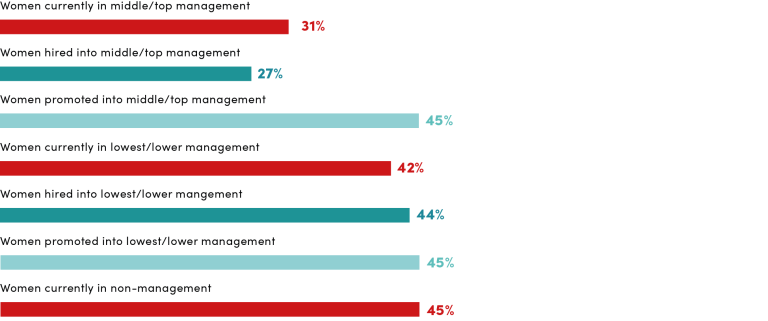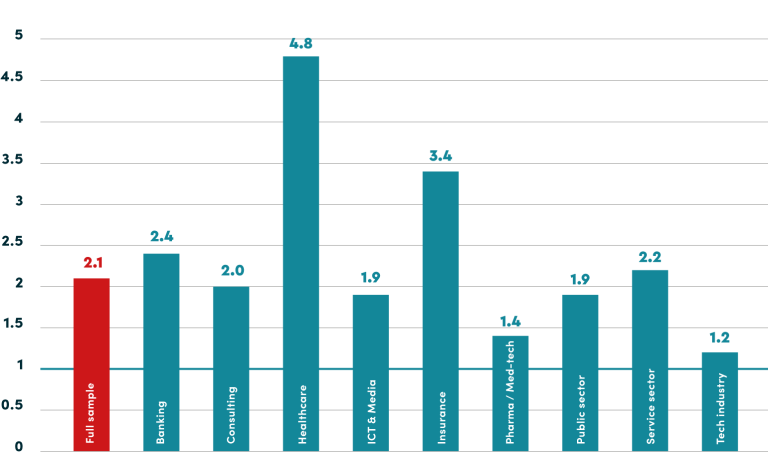As in other industries, the share of women in pharma/med-tech decreases from non-management to top management. While women make up 45% of non-management roles, their share drops to 27% in top management — a decline of 18 percentage points. In many other industries, the largest drop in female representation occurs between lowest and lower management. In pharma/med-tech, however, the opposite is true: the share of women increases by five percentage points between these two levels. At 42%, the proportion of women in lower management is only three percentage points below that in non-management. This indicates that in pharma/med-tech, the decline in female representation mainly occurs in the step up to middle and top management.
In lowest and lower management, both recruitment and promotions contribute to maintaining the status quo. Women account for 45% of promotions — three percentage points above their current representation in these levels and matching the female share in the pipeline (non-management). The share of women among new hires is only one percentage point lower.
In middle and top management, women also make up 45% of those promoted. This is 14 percentage points higher than their current share in these positions and three points above the female representation in lowest/lower management — the pipeline for these positions. Promotions thus support an increase in the share of women in middle and top management. The situation is different for recruitment into these levels: here, the female share is just 27%, which is four percentage points below the current female representation in these levels. Recruitment, therefore, does not contribute to raising the proportion of women in middle and top management.

With a Glass Ceiling Index of 1.4, the pharma/med-tech industry is one of the sectors with the lowest GCI. The only sector with a lower GCI is the tech industry. While this is good news, women still face some difficulties for reaching middle and top management levels in this sector.

Unlike in other industries, women and men in pharma/med-tech work at high average employment rates across all hierarchical levels. The largest gender differences are seen in lowest management and non-management, where women work on average about 6 percentage points less than men. In middle and top management, full-time is the norm for both women and men. Possible challenge: Companies with more flexible career progression and part-time work may be more attractive to employees who would like to work part-time.